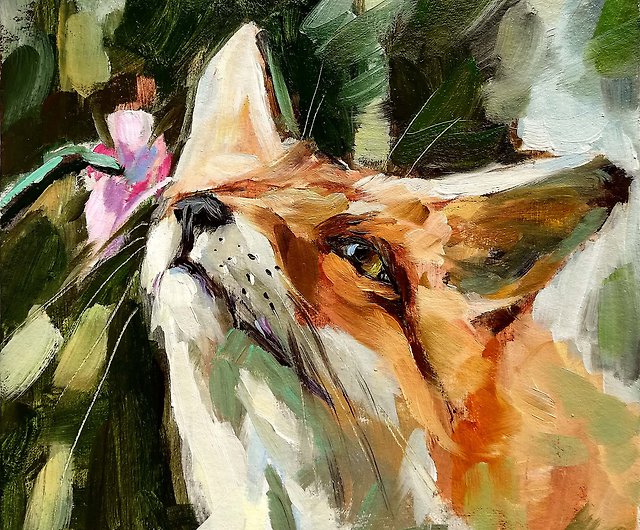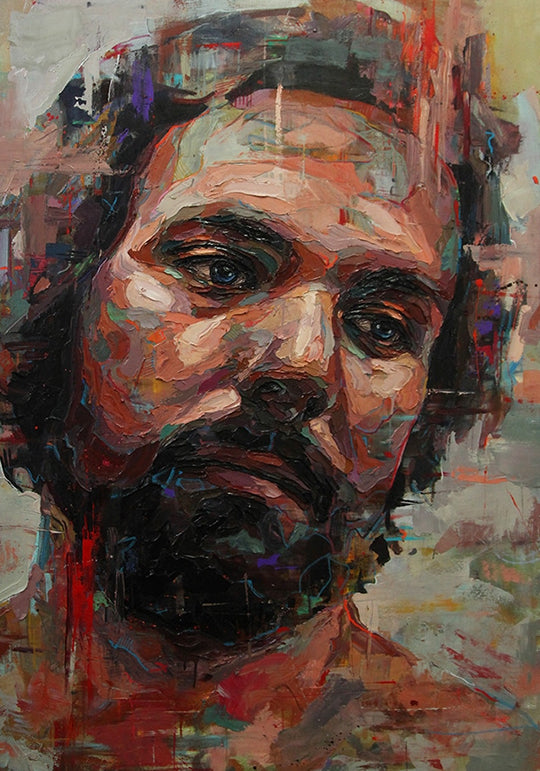Handcrafted Creations: Oil Paintings for Sale by Artists
Handcrafted Creations: Oil Paintings for Sale by Artists
Blog Article
Checking out Everything About Oil Paints: A Guide to Recognizing Their Charm and Value
Oil paintings have mesmerized audiences for centuries, offering a glimpse right into the imaginative proficiency of numerous periods. Their rich history is linked with cutting-edge methods and profound emotional expression. Comprehending the products and approaches behind these art work can boost appreciation. In addition, the marketplace for oil paintings presents chances for financiers and collection agencies alike. As one explores this remarkable world, the question emerges: what makes an oil painting truly useful?
The History of Oil Paint: A Trip With Time
Although oil paint has roots that date back to ancient times, it really prospered throughout the Renaissance, when artists discovered its versatility and abundant color possibility. Early examples can be mapped to the 7th century, with techniques advancing significantly throughout cultures. The tool became famous in Northern Europe in the 15th century, especially via the works of musicians like Jan van Eyck, that pioneered its usage for comprehensive realistic look and dynamic colors. This duration marked a separation from tempera paints, permitting for greater deepness and structure. As oil paint spread, it influenced many artists, resulting in work of arts by renowned figures such as Leonardo da Vinci and Rembrandt. The tool's heritage continues, forming the art globe well into modern times.
Comprehending Oil Repaints: Products and Techniques
As artists explore the world of oil paints, they come across a varied range of products and strategies that define this medium. The main parts of oil paint consist of pigments, which provide shade, and drying oils, such as linseed, that bind the pigments and assist in application. Numerous ingredients can change the paint's appearance and drying time, boosting versatility. Techniques like glazing, where clear layers are constructed up, and impasto, which entails using thick paint, enable different aesthetic results. In addition, the usage of brushes, scheme blades, and even fingers can create special appearances and surfaces. Recognizing these materials and methods enables artists to fully share their creative thinking and achieve the wanted impact in their art work.
The Duty of Color in Oil Paintings
Shade plays a crucial duty in oil paintings, affecting both visual appeal and psychological resonance. Recognizing color theory fundamentals, including the partnerships between tones, can improve an artist's capability to convey state of mind and ambience. In addition, mastering shade blending techniques permits better depth and splendor in a painting's combination.

Shade Concept Basics
Understanding shade theory is important for musicians dealing with oil paints, as it forms the structure for creating aesthetically engaging and unified compositions. Shade theory incorporates the research study of how colors engage, the color wheel, and the connections between key, second, and tertiary shades. Artists make use of corresponding colors to boost contrasts and produce focal points, while analogous shades promote unity and cohesiveness within an item. Furthermore, the concepts of cozy and trendy colors influence the understanding of deepness and area in a paint. Comprehending these principles permits artists to adjust color effectively, guiding the customer's eye and connecting their designated message. Mastery of shade concept eventually improves a musician's capability to share emotions and ideas with their job.
Emotional Effect of Shade
The psychological impact of color in oil paints plays an important role in just how customers connect and view with art work. Shades stimulate particular sensations and state of minds, affecting the viewer's mood. Warm colors like oranges and reds can produce a sense of heat and power, while cool tones such as blues and greens commonly stimulate peace or self-contemplation. Artists purposefully pick shade palettes to boost narrative aspects, leading the target market's psychological trip. The saturation and contrast of colors further enhance these effects, attracting focus and developing focus. Inevitably, the interaction of colors in oil paintings not just boosts their visual charm but also functions as an effective medium for emotional expression, enriching the audience's experience and interpretation.
Color Mixing Techniques
While numerous facets of oil painting add to the overall make-up, grasping color mixing strategies is important for achieving wanted impacts and depth. Shade mixing can be come close to via different approaches, consisting of the subtractive and additive procedures. Additive mixing entails incorporating colors of light, while subtractive blending relies upon pigments, where shades blend to create new shades. Artists typically utilize a limited palette to develop unified works, understanding the relationships in between key, additional, and tertiary colors. Techniques such as glazing and scumbling further boost deepness and luminosity. By masterfully blending colors, a musician can stimulate emotions, develop prime focus, and achieve a sense of realistic look, ultimately boosting the painting's emotional and visual impact.
Famous Oil Painters and Their Iconic Works

Famous for their mastery of color and strategy, oil painters have actually created a few of one of the most well known artworks in background. Renowned artists like Vincent van Gogh mesmerized target markets with his emotive brushwork in "Starry Evening," while Claude Monet's "Impact, Dawn" laid the groundwork for Impressionism. Leonardo da Vinci's "Mona Lisa" continues to be an enduring sign of artistic wizard, showcasing his skill in catching human expression. Rembrandt's "The Night Watch" illustrates his ingenious use of light and shadow. Other notable numbers consist of Pablo Picasso, that read more reinvented contemporary art with his strong experimentation in works like "Les Demoiselles d'Avignon," and Georgia O'Keeffe, whose vibrant representations of landscapes and flowers helped specify American innovation. Each artist's special style contributed significantly to the oil paint landscape.
Just how to Examine the Top Quality of an Oil Painting
Assessing the top quality of an oil painting entails a cautious assessment of workmanship methods, in addition to an evaluation of color and structure. Observing brushwork, layering, and the application of paint can reveal the artist's ability level. In addition, the interaction of colors and the total plan of components add considerably to the paint's aesthetic worth.
Evaluating Workmanship Methods
A thorough analysis of workmanship methods is crucial for determining the top quality of an oil painting. Evaluators need to initially take a look at the application of paint; thick, textured brushstrokes might recommend an experienced hand, while overly consistent applications might indicate an absence of deepness. oil paintings for sale. The layering technique is likewise vital; the existence of lusters and varied thickness can boost luminosity and complexity. In addition, the quality of the products made use of, such as the canvas and pigments, plays a significant function in resilience and total aesthetic. Interest to information in components like edges and shifts in between shades reflects the artist's dedication to their craft. Inevitably, these techniques add to the paint's psychological impact and market price, working as indications of the musician's skill and intent
Assessing Color and Composition
While examining the quality of an oil paint, one must concentrate on the interaction of color and make-up, as these aspects are essential to the art work's overall effect. Shade choices can stimulate feelings and establish mood; for that reason, the musician's scheme need to be examined for harmony and comparison. A healthy make-up routes the visitor's eye and develops a sense of unity. Musicians typically utilize strategies like the policy of thirds or leading lines to boost aesthetic rate of interest. Furthermore, the use of light and shadow can add depth, enhancing the three-dimensionality of the painting. Eventually, a successful oil painting marries shade and make-up, engaging the visitor and welcoming a deeper admiration of the musician's vision and strategy.
Taking care of and Preserving Oil Paintings
Correct treatment and conservation of oil paintings is vital for preserving their integrity and long life. To shield these art work, it is crucial to display them away from straight sunlight, which can cause fading and discoloration. Maintaining a stable environment with controlled temperature level and moisture more help in avoiding damage. Cleaning up ought to be done carefully utilizing a soft, dry cloth, avoiding any kind of rough chemicals that can hurt the paint or varnish. Routine evaluations for signs of wear and tear, such as breaking or flaking, are advisable. When saving or delivering oil paints, proper padding and framing are essential to avoid physical injury. Ultimately, attentive care adds to the aesthetic charm and worth of oil paintings gradually.
The Marketplace for Oil Paintings: Gathering and Spending
Understanding the marketplace dynamics for oil paints is necessary for collection agencies and investors alike. The worth of these artworks is affected by numerous elements, consisting of the artist's reputation, historic relevance, and existing trends. Collection agencies commonly look for pieces that resonate directly while considering prospective recognition in worth. Galleries and auctions work as primary locations for acquiring and marketing, with prices varying based on need and rarity. Buying oil paintings calls for study into the market, in addition to an understanding of credibility and provenance. In addition, emerging musicians might provide possibilities for significant returns, while established names can command high prices. In general, a calculated technique to accumulating can generate both visual satisfaction and economic incentives.

Often Asked Questions
What Are the Ecological Impacts of Oil Paint Materials?
The ecological impacts of oil paint materials consist of the release of unpredictable organic substances (VOCs), damaging waste generation, and resource extraction for pigments. These factors add to air pollution and environmental destruction, increasing problems among eco mindful musicians and consumers.
Exactly How Do Various Canvases Impact Oil Paint Outcomes?
Various canvases affect oil painting results significantly. Surface, texture, and absorbency high quality can alter paint application, drying out times, and color vibrancy. Artists frequently select certain canvases to accomplish wanted effects and improve their imaginative expression.
Can Oil Paintings Be Recovered if Harmed?
Oil paints can without a doubt be recovered if harmed. Expert conservators utilize various methods to fix tears, clean surface areas, and address staining, making certain that the art work keeps its original charm and worth for future generations.
What Are the Indications of an Initial Oil Painting?
The indicators of an original oil paint consist of visible brush strokes, appearance variations, and an irregular canvas weave (oil paintings for sale). Furthermore, authenticity might be confirmed via provenance, signatures, and the visibility of a varnish layer distinct to oil tools
How Has Modern Technology Influenced Modern Oil Painting Techniques?
Innovation has significantly affected contemporary oil paint techniques by presenting digital tools for preparation, enhanced products for texture and durability, and on the internet platforms for sharing and selling art, consequently expanding artists' imaginative possibilities and audience get to. Oil painting has roots that date back to old times, it really grew during the Renaissance, when artists found its versatility and rich shade possibility. The psychological impact of shade in oil paints plays a critical function in how viewers connect and regard with art work. While numerous facets of oil paint contribute to the total structure, mastering shade mixing techniques is necessary for attaining wanted effects and depth. Reviewing the quality of an oil painting includes a cautious evaluation of workmanship strategies, as well as an evaluation of shade and make-up. While evaluating the high quality of an oil painting, one need to concentrate on the interplay of shade and composition, as these aspects are essential to the art work's general influence.
Report this page